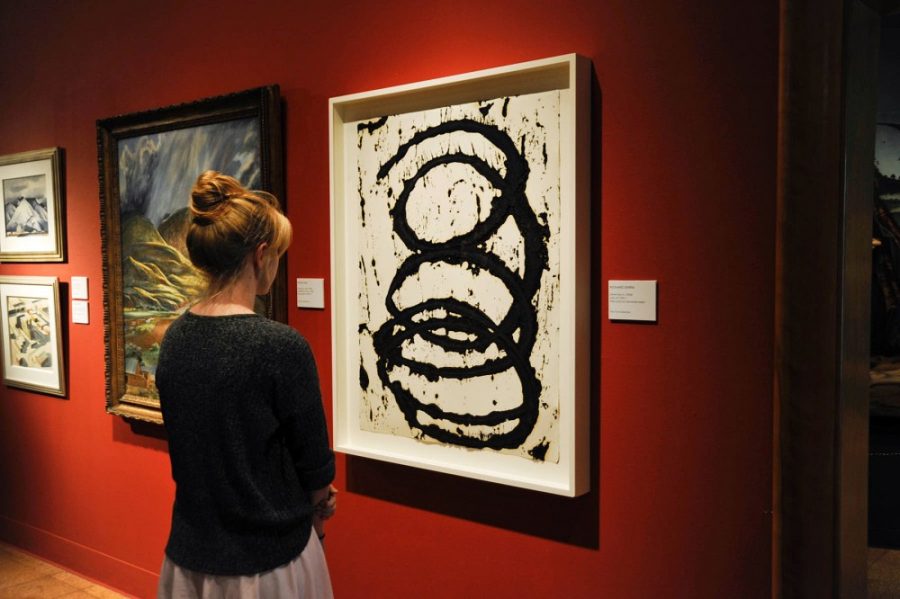The UA Museum of Art is the best university museum I have ever been to.
This space is on the level of better-known art institutions from all over the world. The UAMA creates an amazing opportunity for students, faculty and Tucson residents to see top-quality art from all over the world throughout all different time periods.
The museum currently displays a dynamic group of modern artwork.
“Modernist Intersections: The Tia Collection,” is on display until Oct. 9. This art is from a private collector in Santa Fe, New Mexico. The number of celebrated artists featured in this collection is mind-blowing—it includes Alexander Calder, Andy Warhol, Robert Rauschenberg and many more. When viewing this show, you will notice that art has been grouped together in relation to a theme in order to create dialog and produce a new understanding of the topic addressed.
Visitors walk up the stairs and toward the back of the museum to see this extraordinary assemblage of art.
Calder fostered his fame from creating moving mobiles and large sculptures using sheet metal, but he also made jewelry and paintings.
“La Botte (maquette)” (1959), is one of his sculptures on display.
It is made from organically cut black pieces of sheet metal. There is a large amount of negative space underneath the artwork, producing an energetic balance.
The sculpture has very small contact spots touching the table, created by forms starting at an almost-point and gradating up into the larger structure. From one angle, it almost looks like animals raising their heads.
There are multiple curved shapes that start from the center of the sculpture and reach upwards.
If you look closely, there are extra pieces of sheet metal layered on top of each other. Since the pieces are riveted together, these extra layers are placed only as design elements. After Calder made the sculpture, he then painted it entirely black.
Calder’s “La Botte (maquette)” was grouped in the exhibit with Robert Mapplethorpe’s “Phillip Prioleau” (1979) and Joel Shapiro’s “Untitled” (2010) based on each piece’s relation to the concept of balance.
Erin Currier’s “The Raft” (2010) shows a frightening scene from a plane crash in the ocean. A plane is being tossed around by waves behind a raft full of people struggling to survive. The artist uses recycled material, which is seen peeking through the outer layer of paint.
Currier comments on civil rights by illustrating the struggles of people by her use of dull, but highly contrasting, exaggerated colors.
“The Raft” is placed with Lajos Vajda’s “Young Laborer” (1930-1933) and other paintings by Currier, all focusing on the theme of civil rights.
Peter Hurd’s “The Month of July” (1962) is a beautiful landscape. The viewer is on a hill, looking down in a valley divided into farmland and mountains. The other side of the valley has mountains painted in neutral tones with a strong contrast emphasizing light that is breaking though the clouds above.
Behind the mountains is a huge rain storm about to engulf the landscape below. The clouds are bellowing up the mountains, colliding and bursting into rain.
The use of color and lines shows the movement of the rain pouring out of the sky. This painting is reminiscent of Tucson during the monsoon season, as the weather interacts with the landscape here similarly as it does in “The Month of July.” Hurd’s stunning piece was grouped with some Maynard Dixon paintings, but you’ll have to go check it out to see more.
“The Tia Collection” is on display at the UA Museum of Art until Oct. 9—don’t miss it.
—
Follow Kristi Rucker on Twitter.









